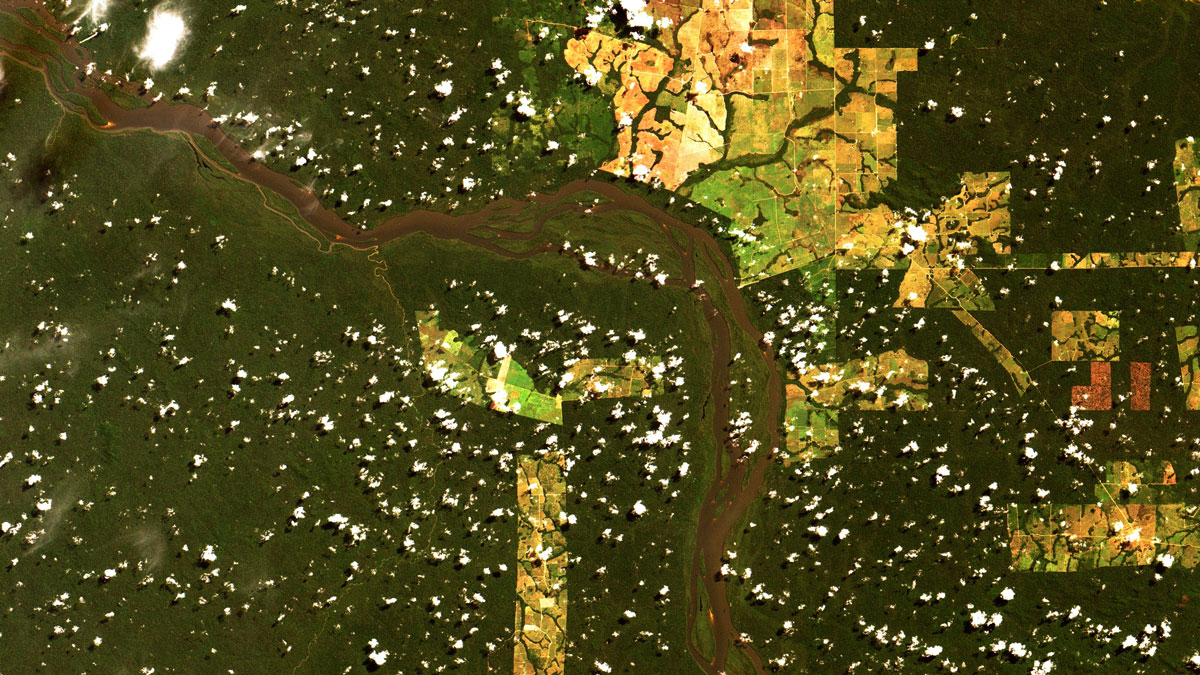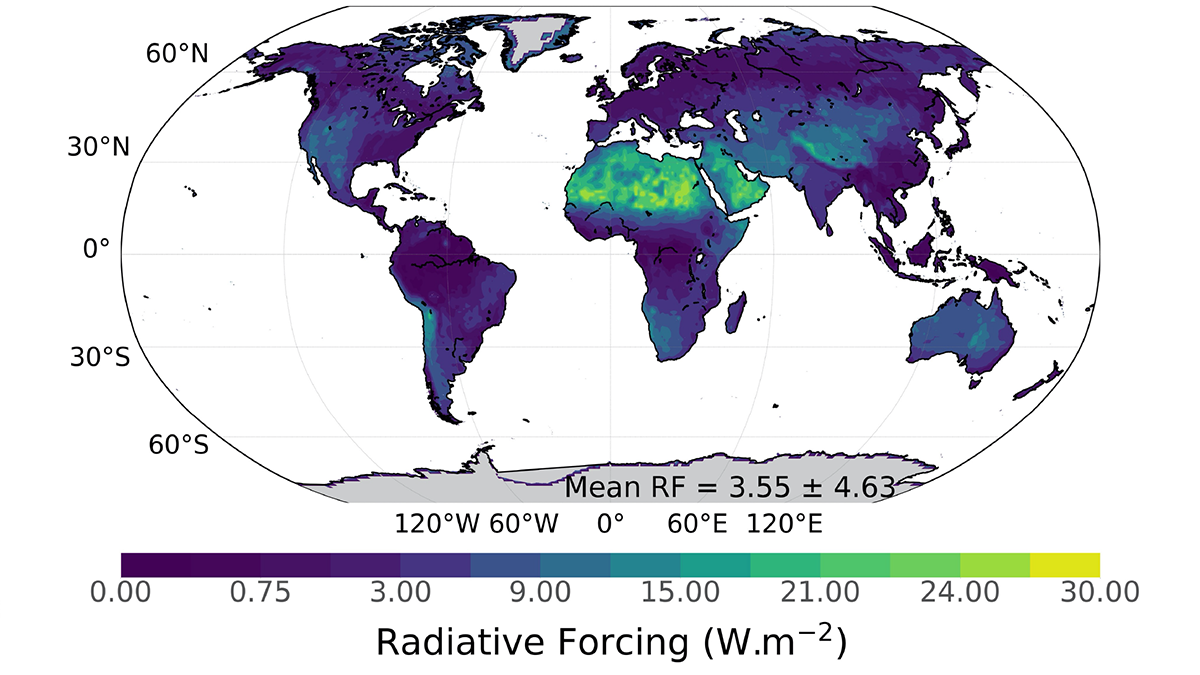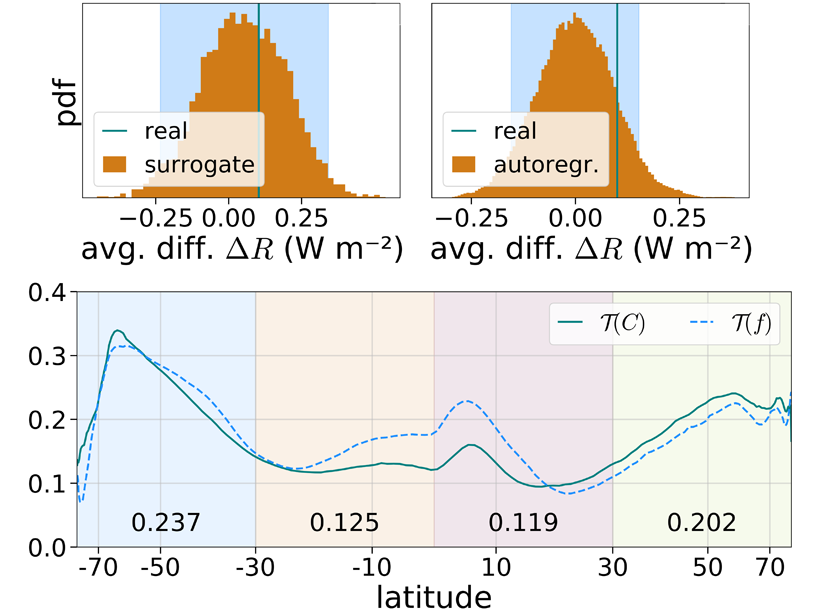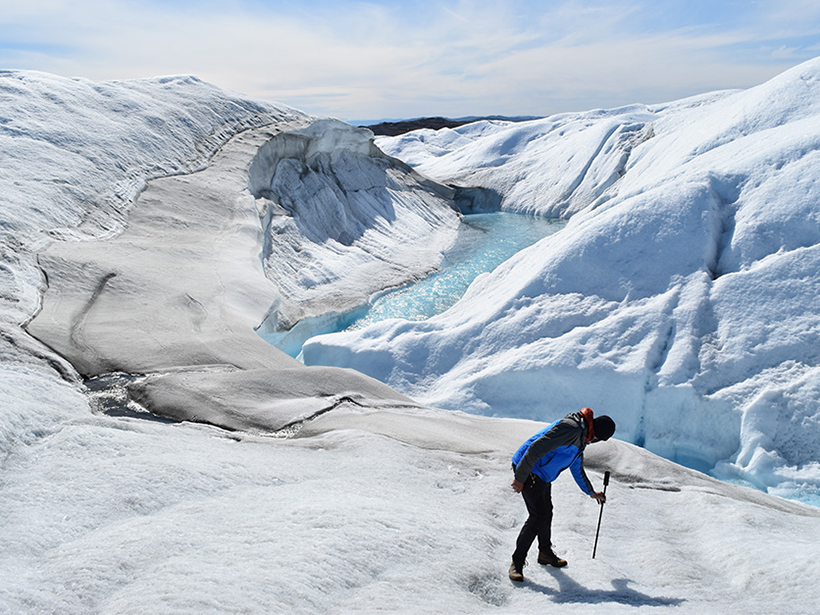The Northern Hemisphere is absorbing more sunlight than the Southern Hemisphere, and clouds can no longer keep the balance.
albedo
Deforestation Is Reducing Rainfall in the Amazon
Researchers found that between 2002 and 2015, a 3.2% reduction in Brazilian forest cover led to a 5.4% reduction in precipitation levels.
Darker, Less Cloudy Earth Contributed to Record Heat
Decreases to our planet’s albedo caused by fewer low-lying clouds helped push temperatures to historic highs in 2023, according to new research.
Planting Trees May Not Be as Good for the Climate as Previously Believed
The climate benefits of trees storing carbon dioxide is partially offset by dark forests’ absorption of more heat from the Sun, and compounds they release that slow the destruction of methane in the atmosphere.
Sensing the Color of Soil for Climate Modeling
The color of soil reflecting the Sun’s rays affects the Earth’s climate and water cycle. Using satellite data that senses many wavelengths improves soil reflectivity estimates, especially in deserts.
Munching Moose Cool Forest Floors
By making clear-cut forests patchier, moose create a reflective surface that bounces back sunlight and keeps temperatures down.
AeroCom Models Improved with Aerosol and Albedo Constraints
Satellite data has been used to correct the aerosol loading and land surface albedo in several AeroCom models, which has improved shortwave flux biases between models and observations.
Is Earth’s Albedo Symmetric Between the Hemispheres?
The two hemispheres feature the same planetary albedo despite a larger land fraction in the north, because storms over the southern ocean are cloudier than their northern counterparts.
Mapping Ice Algal Blooms from Space
Satellite data reveal how colorful algae are melting the Greenland ice sheet.










